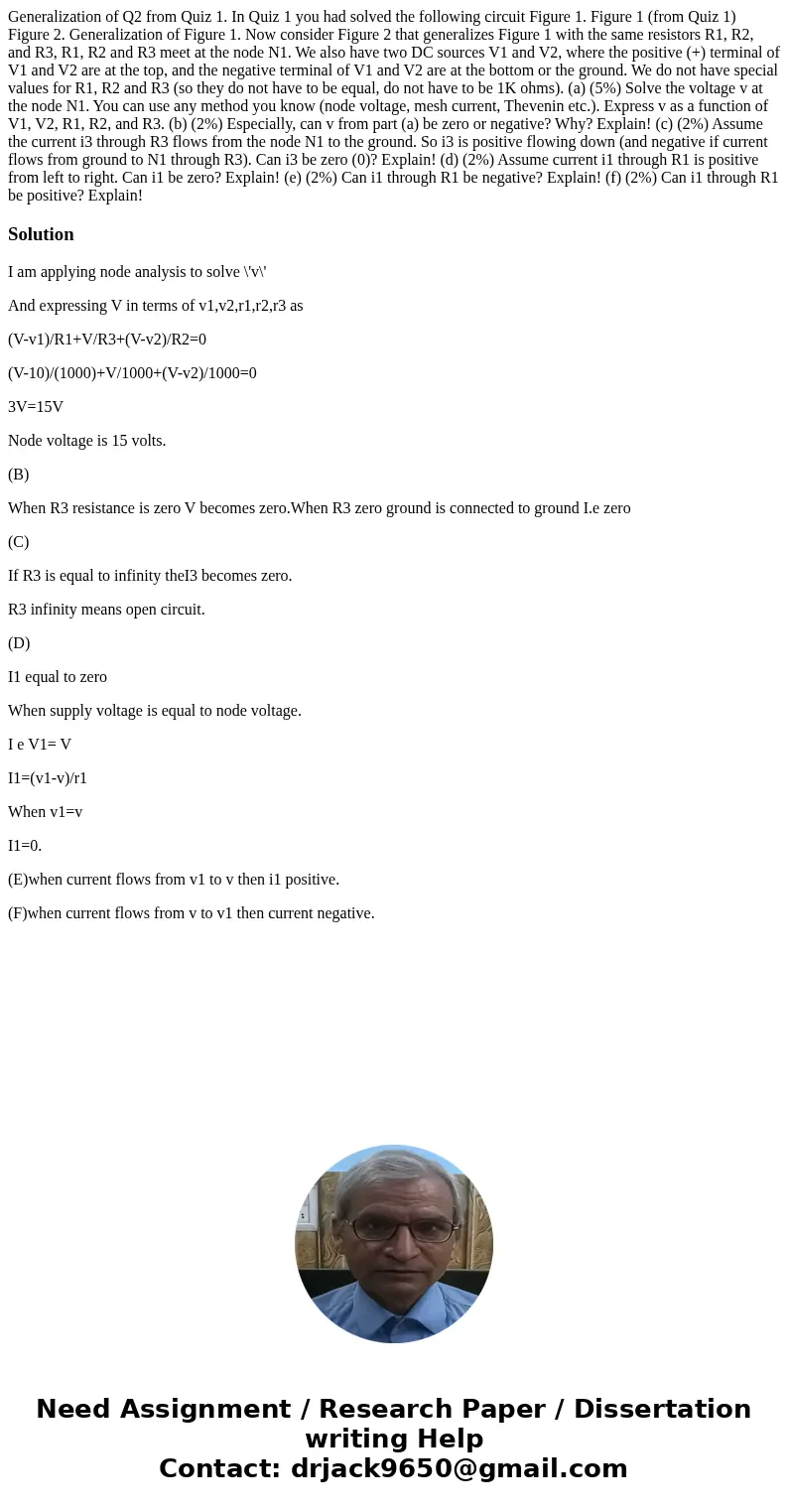Generalization of Q2 from Quiz 1 In Quiz 1 you had solved th
Generalization of Q2 from Quiz 1. In Quiz 1 you had solved the following circuit Figure 1. Figure 1 (from Quiz 1) Figure 2. Generalization of Figure 1. Now consider Figure 2 that generalizes Figure 1 with the same resistors R1, R2, and R3, R1, R2 and R3 meet at the node N1. We also have two DC sources V1 and V2, where the positive (+) terminal of V1 and V2 are at the top, and the negative terminal of V1 and V2 are at the bottom or the ground. We do not have special values for R1, R2 and R3 (so they do not have to be equal, do not have to be 1K ohms). (a) (5%) Solve the voltage v at the node N1. You can use any method you know (node voltage, mesh current, Thevenin etc.). Express v as a function of V1, V2, R1, R2, and R3. (b) (2%) Especially, can v from part (a) be zero or negative? Why? Explain! (c) (2%) Assume the current i3 through R3 flows from the node N1 to the ground. So i3 is positive flowing down (and negative if current flows from ground to N1 through R3). Can i3 be zero (0)? Explain! (d) (2%) Assume current i1 through R1 is positive from left to right. Can i1 be zero? Explain! (e) (2%) Can i1 through R1 be negative? Explain! (f) (2%) Can i1 through R1 be positive? Explain!
Solution
I am applying node analysis to solve \'v\'
And expressing V in terms of v1,v2,r1,r2,r3 as
(V-v1)/R1+V/R3+(V-v2)/R2=0
(V-10)/(1000)+V/1000+(V-v2)/1000=0
3V=15V
Node voltage is 15 volts.
(B)
When R3 resistance is zero V becomes zero.When R3 zero ground is connected to ground I.e zero
(C)
If R3 is equal to infinity theI3 becomes zero.
R3 infinity means open circuit.
(D)
I1 equal to zero
When supply voltage is equal to node voltage.
I e V1= V
I1=(v1-v)/r1
When v1=v
I1=0.
(E)when current flows from v1 to v then i1 positive.
(F)when current flows from v to v1 then current negative.

 Homework Sourse
Homework Sourse